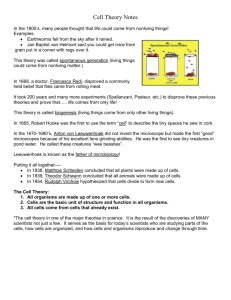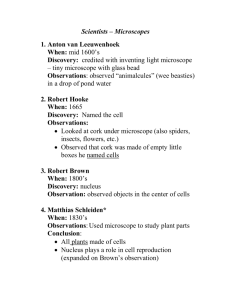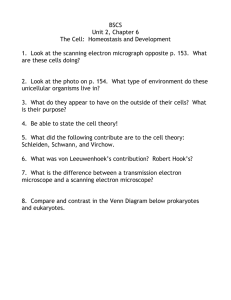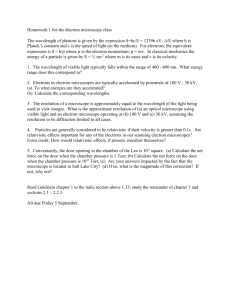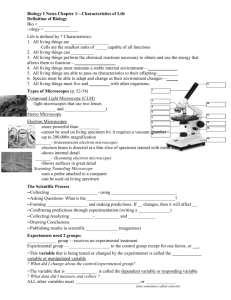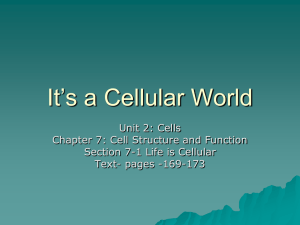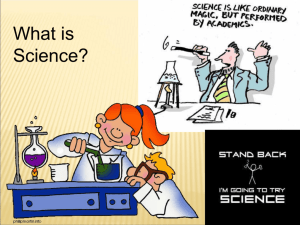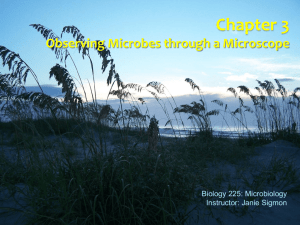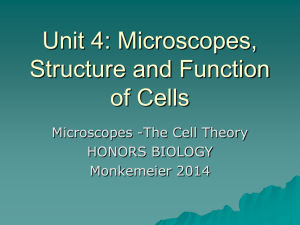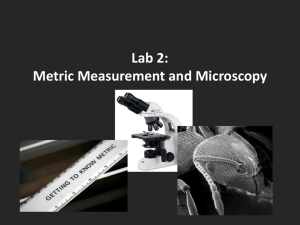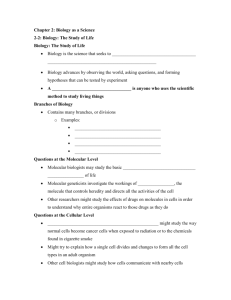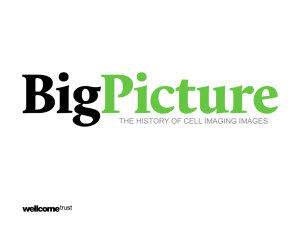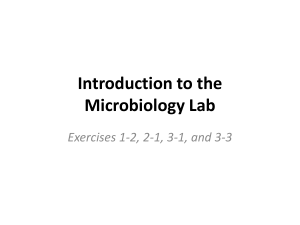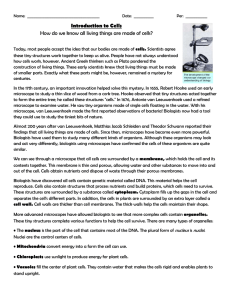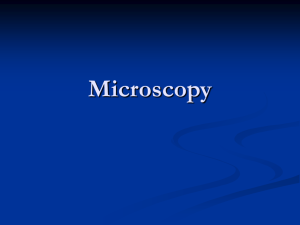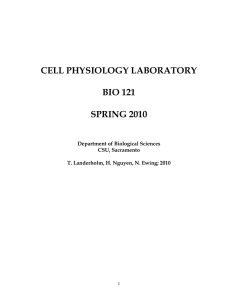Life Is Cellular 7.1 Foundations
advertisement
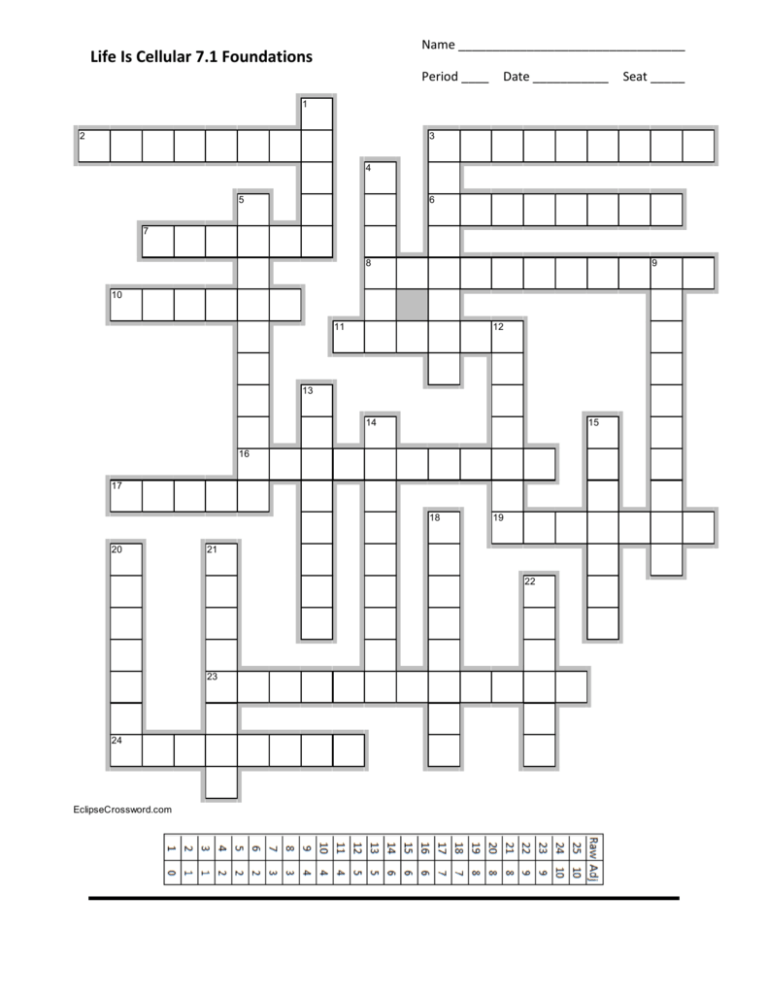
Name _________________________________ Life Is Cellular 7.1 Foundations Period ____ Date ___________ Seat _____ 1 2 3 4 5 6 7 8 9 10 11 12 13 14 15 16 17 18 20 19 21 22 23 24 EclipseCrossword.com Life Is Cellular 7.1 Foundations Across 2. 3. 6. 7. 8. 10. 11. 16. 17. 19. 23. 24. All cells are surrounded by a thin, flexible barrier called a cell __. Electron microscopes can show things that are one-__ of a meter in size. The __ light microscope uses two glass lenses to focus light and magnify objects. Scientists use dyes and __ to make structures in transparent cells show up under a light microscope. He was the first to discover that pond water had tiny living things in it. He also observed bacteria under a microscope. Scientists use "false __" to make structures in microscope images stand out. A drawback to using electron microscopes is that __ cells and tissues cannot be observed. Primitive cells that do not have nuclei. This person discovered cork tissue in plants consisted of empty boxes, which he referred to as cells. Eukaryotes are generally larger and more __ than prokaryotes. This type of electron microscope sends beams of electrons through thin slices of cells and tissues. In this type of electron microscope, a beam of electrons is scanned over the surface of an object to give a three-dimensional image of the object's surface. Down 1. 3. 4. 5. 9. 12. 13. 14. 15. 18. 20. 21. 22. The smallest living unit of any organism. Leeuwenhoek observed this domain of prokaryotes under a microscope that he got from his mouth. Plural form of nucleus. An instrument that uses lenses to produce magnified images of very small objects. Cells that enclose their DNA in nuclei are called __. All cells at some point in their lives contain DNA. DNA is the molecule that carries __ information. Light microscopes can magnify objects to about one __ times. Singular form of bacteria. Prokaryotic cells are generally smaller and __ than eukaryotic cells. A kingdom of single-celled eukaryotes that Leeuwenhoek observed in pond water. The cellular structure that holds a cell's DNA. Cell theory states that new cells come from __ cells. Cell __ states that all living things are made up of cells.


